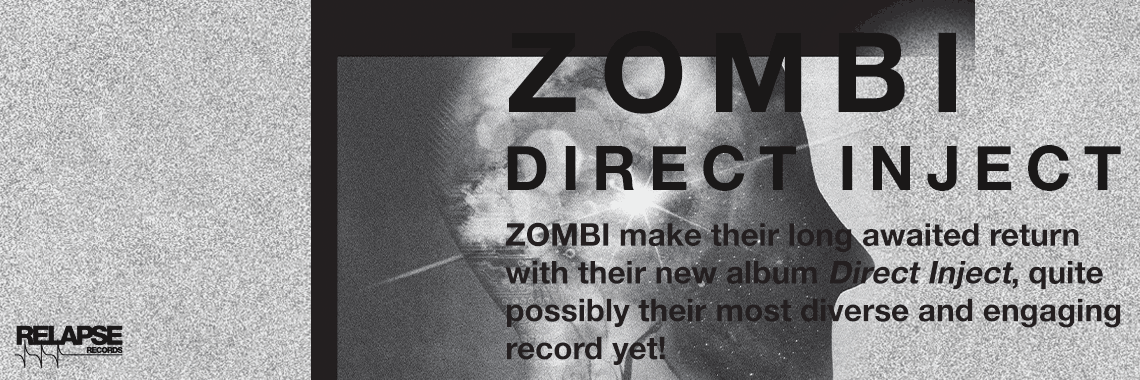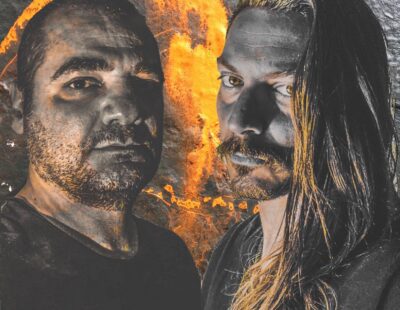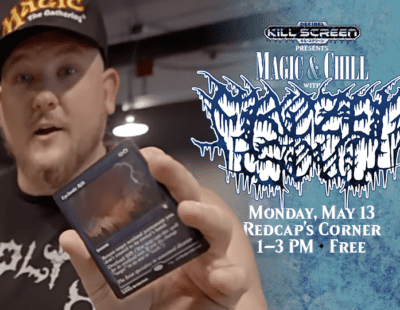Last year we excerpted a couple selections from Lewis Dimmick’s excellent book This Music over at the Metalnomicon. He came back not long ago to take us behind the scenes of hardcore megaliths Sheer Terror. Today he returns with another great guest essay on Beyond/Quicksand guitarist Tom Capone’s metal roots and his uber-brutal Mutilator fanzine…
In 1985, Tom Capone, renowned guitarist for New York Hardcore legends Beyond and post-hardcore trailblazers Quicksand, published a single issue of Mutilator fanzine. It documented the proliferating world of underground metal: thrash metal; death metal; satanic metal; power metal; deathcore thrash.
Playing fast and destroying wimps and posers are dominant themes throughout the issue.
As the title of the fanzine might suggest, Tom was something of an outcast in high school. Mutilator was his creative outlet: interviewing bands; trading tapes; writing letters — you know, on paper, delivered by a postman, that guy with the funny outfit who’s always getting bitten by a dog — typing out interviews on a manual typewriter; learning to cut and paste layouts together.
“Seeing other zines was what inspired me to do my own,” Tom tells me. “I ordered the Hellhammer demo from a zine called Kick Ass Monthly. That demo made Venom sound like Mickey Mouse. No one knew about all these underground bands. They were doing really advanced stuff. It was genius.”
The initial batch of Mutilator was fifty copies. Dutch East India Trading, a prominent distributor, saw a copy and was impressed; they asked for two hundred more.
Tom ran off all two hundred at his dad’s office, manually feeding the sheets and turning them over to produce the double-sided copies. A second issue was mostly completed, but never made it to production.
I purchased my copy of Mutilator at Our Music Center on Staten Island. Thanks to the good people at Dutch East India, a copy of the issue made it that far. It was my first underground fanzine. The poorly photocopied black and white cover appealed to me. I owned a couple of demos, also featuring poorly photocopied black and white covers, and I knew the underground was where I wanted to be. The products seemed more genuine; there was less pretense — song titles were often handwritten, and often sloppily — and there was a sense of struggle implied; bringing these products into existence at all seemed to be a struggle. Funds were obviously limited. Resources were few. The only thing left, I think I understood this even then, was passion, the desire to create something, to contribute something to a world in which one did not feel like an outcast.
Tom no longer owns a copy of his own zine. Most likely it was lost in a move. I photocopied mine and sent it to him. “I never realized the spelling was that bad,” he says, having read it over for the first time in years.
It’s true. What’s interesting is that, despite my title as Fourth Grade Spelling Bee Champion, I also never realized the spelling was so atrocious. I see that only now. I was fifteen then and another fifteen year-old was introducing me, through his magazine, to bands like NYC Mayhem and Nuclear Assault. I don’t remember seeing one spelling error. I soaked up the interviews and ordered the demos.
As far as I was concerned, Mutilator was an authoritative document. The real deal.
NYC Mayhem became one of my favorite bands in the world. In 1985, “crossover” was taking hold. Hardcore punk bands and thrash metal bands were intermingling styles. The leaders of this movement were Corrosion Of Conformity and Dirty Rotten Imbeciles. Maybe because the members of NYC Mayhem were wearing the T-shirts of these bands, I decided to order their demo. I sent my three dollars and received a tape back from Gordon Ancis, the guitar player. The band fit its description perfectly: “Violent noise at extreme speed.” As Ancis pointed out in the interview, their sound borrowed from “hardcore for the speed, and metal for the power.”
Mayhem wasn’t, like C.O.C, from North Carolina, or, like D.R.I., from Texas. They were from NYC! They had the sound of my city all over them. They were raw, frantic and hard-edged. I loved it. The B-side of the demo featured a live set from CBGB’s recorded months after the demo, and the hardcore influence in their sound was more apparent. The following year, early in 1986, I would visit CBGB’s for the first time, to see Straight Ahead, and for the next three years, the Sunday matinees were my entire world.
Mutilator was crucial in setting me on that path.
Tom also moved on to hardcore around that time. “At that age you’re changing fast, and hardcore music was all about change. It was right up my alley.” He was attracted to the attitude of hardcore, “doing what you want,” and the focus on ideas. Hardcore was more an extension of real life, more personal, while metal was based in fantasy.
Still, he speaks of metal with reverence. “I remember writing to Quorthon from Bathory,” he tells me. “I still have the original envelopes and letters. Instead of ending them with ‘goodbye’ or something boring like that, I ended them with ‘Die in Hell!’”







